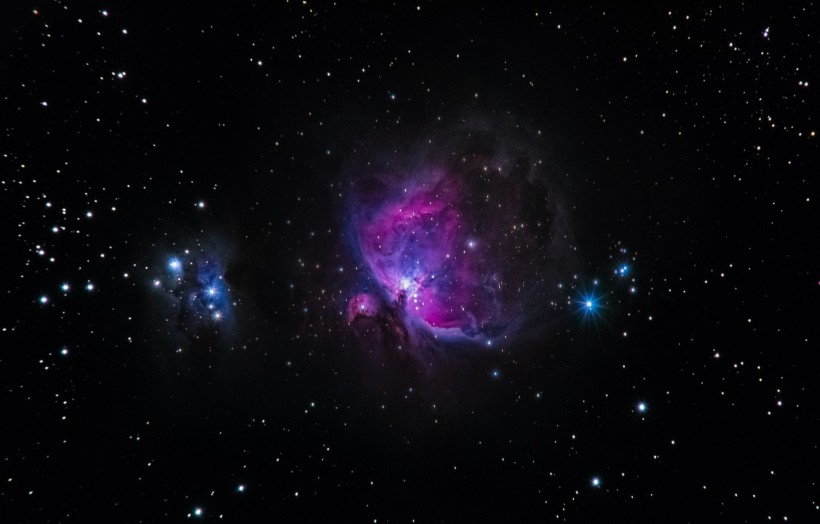A fossil galaxy located near the big Andromeda galaxy is believed to be an important component of the earliest galaxies in the universe.
According to the report, an astronomer witnessed the ultra-faint dwarf galaxy using a telescope. From that, scientists speculate that its very existence could hint at a new astronomical finding.
Fossil Galaxy Spotted in Andromeda

(Photo : Alexander Andrews from Unsplash)
An astronomer claims that the stars of this extremely faint galaxy came from the oldest galaxies in the universe.
According to a report by Space.com, Giuseppe Donatiello, an amateur astronomer, has encountered the so-called Pegasus V galaxy through the lens of a special camera from the Department of Energy.
This optical instrument is effective in spotting the dark energy of a planet or a celestial object. Upon knowing this rare sighting, scientists say that this galaxy could be a "fossil" of the oldest galaxies.
"This discovery marks the first time a galaxy this faint has been found around the Andromeda Galaxy using an astronomical survey that wasn't specifically designed for the task," UK's University of Surrey astronomer Michelle Collins said.
Using the Victor M. Blanco Telescope, Donatiello captured minute glimpses of the galaxy in Chile, particularly at the Cerro Tololo Inter-American Observatory.
At the time, David Martinez-Delgado, another astronomer from Spain's Instituto de Astrofisica de Andalucia, was conducting separate research regarding the lingering galaxies around Andromeda.
Upon learning the existence of the fossil galaxy, the scientists propose an argument that this could be a speck of an ancient galaxy. Its stars are said to be a former part of it.
Through the NOIRLab's Community Science and Data Center or CSDC, a deeper discovery unfolds right in front of the astronomers. Indeed, encountering such a finding is rare since only a few sightings of it have been recorded so far.
One of the most challenging parts of this exploration is how difficult to spot a single faint dwarf galaxy. Because they faintly glow, spotting them is a chore even for a pro astronomer.
According to NOIRLab, scientists are facing a "serious" problem regarding studying dark matter and cosmology if the predicted population of faint galaxies does not match its actual number.
Related Article: Astronomers Discover 7 Dwarf Galaxy Groups That May Eventually Merge, Form Larger Galaxies
Dark Matter in Galaxies
Like the atom as the fundamental block of matter, the universe won't be formed without dark matter. To date, many believe that the majority of galactical matter has something to do with dark matter.
Unfortunately, astronomers have not yet succeeded in seeing dark matter under a telescope. This is a test that they need to overcome if they want to take their astronomical research to the next level.
If their understanding of dark matter is right, then they could potentially identify how it is connected to the fossil galaxy. Still, it will be a long process, but this is a good start for this astronomical venture that will help the astronomers understand what really lies in millions of galaxies up there.
To view the study, check this link for more information.
Read Also: Spaceflights Permanently Decrease NASA Astronauts' Bone Density! New Study Claims Recovery is Rare
This article is owned by Tech Times
Written by Joseph Henry





